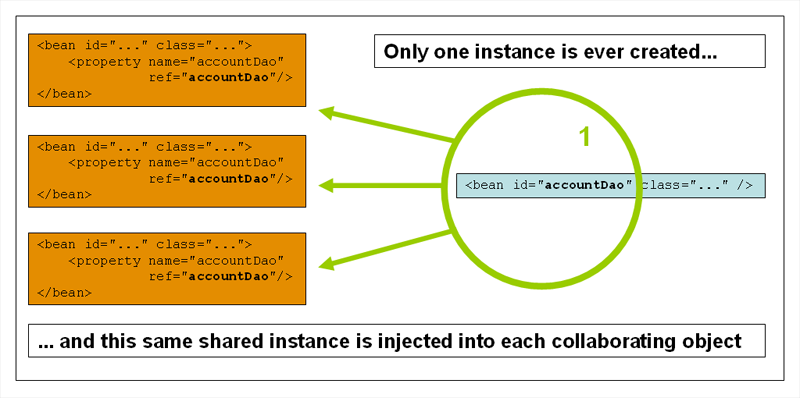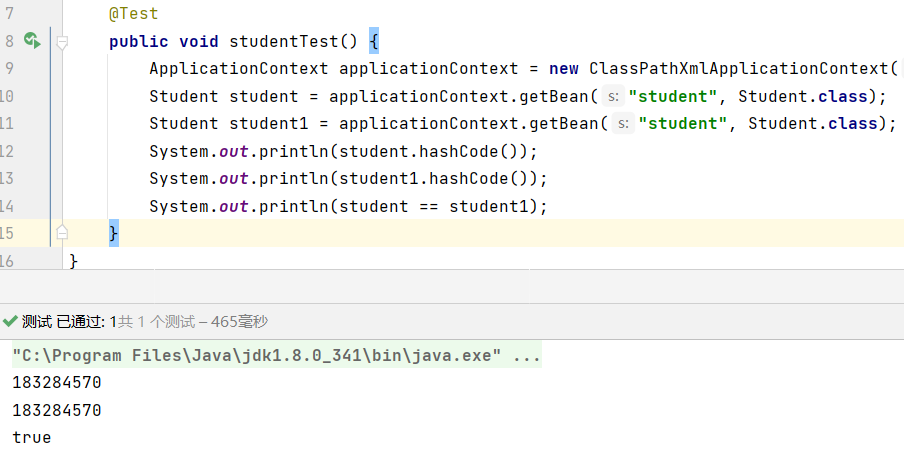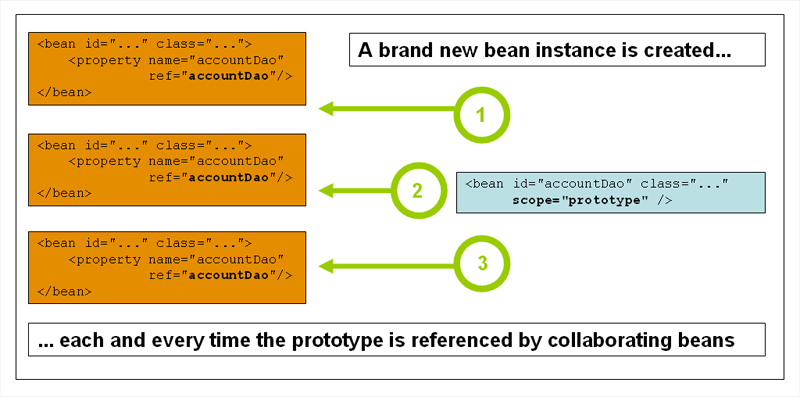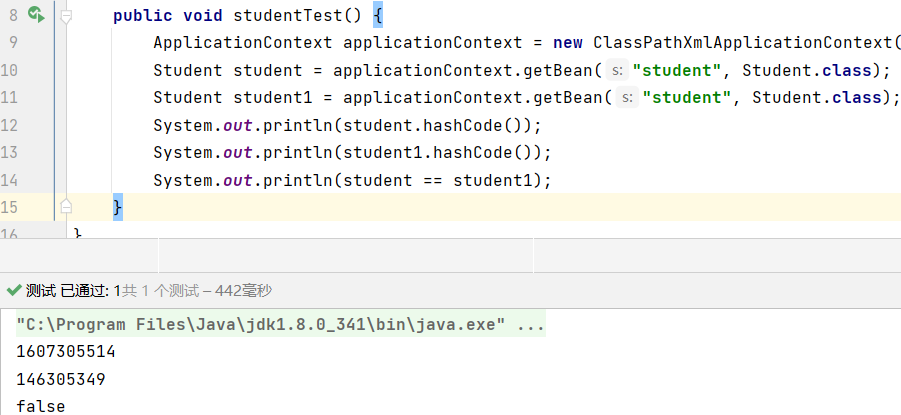Spring(八):Bean的作用域
Spring框架支持六个作用域,其中四个只有在Web中才能用到,在此我们只说明前两种作用域。
下面是所有的六种作用域:
| Scope | Description |
|---|---|
|
(Default) Scopes a single bean definition to a single object instance for each Spring IoC container. |
|
|
Scopes a single bean definition to any number of object instances. |
|
|
Scopes a single bean definition to the lifecycle of a single HTTP request. That is, each HTTP request has its own instance of a bean created off the back of a single bean definition. Only valid in the context of a web-aware Spring . |
|
|
Scopes a single bean definition to the lifecycle of an HTTP . Only valid in the context of a web-aware Spring . |
|
|
Scopes a single bean definition to the lifecycle of a . Only valid in the context of a web-aware Spring . |
|
|
Scopes a single bean definition to the lifecycle of a . Only valid in the context of a web-aware Spring . |
这里我们对前两种singleton(单例)和prototype(原型进行学习)。
一、singleton
单例作用域是Spring框架的默认作用域。官方对它的说明是这样的:
仅管理单例 Bean 的一个共享实例,并且所有对 ID 或 ID 与该 Bean 定义匹配的 Bean 的请求都会导致 Spring 容器返回该特定 Bean 实例。
换句话说,当你定义一个bean定义并且它的范围是一个单例时,Spring IoC容器只创建由该bean定义定义的对象的一个实例。此单个实例存储在此类单例 Bean 的缓存中,并且对该
命名 Bean 的所有后续请求和引用都将返回缓存的对象。下图显示了单例作用域的工作原理:

下面是官方给出的单例的实例:
<bean id="accountService" class="com.something.DefaultAccountService"/> <!-- the following is equivalent, though redundant (singleton scope is the default) --> <bean id="accountService" class="com.something.DefaultAccountService" scope="singleton"/>
上面两段代码的效果是完全一样的,由于默认是单例模式,所以scope="singleton"这样显性地展示出来并非必要的。
下面我们对单例模式进行一个测试,看它是否是同一个对象的实例。
<bean id="student" class="com.jms.pojo.Student">

由此我们可以确认这是同一个实例。
二、prototype
Bean 部署的非单例原型范围会导致每次对特定 Bean 发出请求时都会创建新的 Bean 实例。也就是说,将 Bean 注入到另一个 Bean 中,或者您通过容器上的方法调用来请求它。通常,应将原型作用域用于所有有状态 Bean,将单例作用域用于无状态 Bean。

下面是官方给出的原型作用域的实例:
<bean id="accountService" class="com.something.DefaultAccountService" scope="prototype"/>
我们接下来对原型作用域进行测试:
<bean id="student" class="com.jms.pojo.Student" scope="prototype">

可以看到使用原型作用域后两个对象不再是一个实例。
(本文仅作个人学习记录用,如有纰漏敬请指正)



【推荐】国内首个AI IDE,深度理解中文开发场景,立即下载体验Trae
【推荐】编程新体验,更懂你的AI,立即体验豆包MarsCode编程助手
【推荐】抖音旗下AI助手豆包,你的智能百科全书,全免费不限次数
【推荐】轻量又高性能的 SSH 工具 IShell:AI 加持,快人一步
· 阿里最新开源QwQ-32B,效果媲美deepseek-r1满血版,部署成本又又又降低了!
· AI编程工具终极对决:字节Trae VS Cursor,谁才是开发者新宠?
· 开源Multi-agent AI智能体框架aevatar.ai,欢迎大家贡献代码
· Manus重磅发布:全球首款通用AI代理技术深度解析与实战指南
· 被坑几百块钱后,我竟然真的恢复了删除的微信聊天记录!